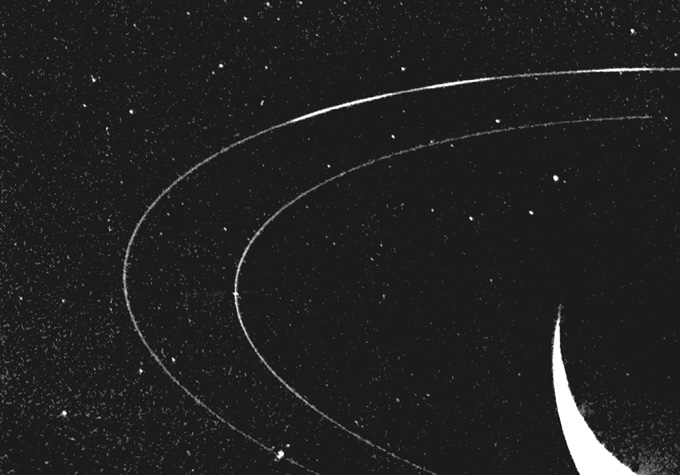Check out the first direct look at Neptune’s rings since the ’80s
These dark rings haven’t been seen since Voyager 2 flew past 33 years ago

Neptune and its rings glow in infrared light in this image from the James Webb Space Telescope.
NASA, ESA, CSA, STScI, Joseph DePasquale/STScI
Share this:
- Share via email (Opens in new window) Email
- Click to share on Facebook (Opens in new window) Facebook
- Click to share on X (Opens in new window) X
- Click to share on Pinterest (Opens in new window) Pinterest
- Click to share on Reddit (Opens in new window) Reddit
- Share to Google Classroom (Opens in new window) Google Classroom
- Click to print (Opens in new window) Print
The rings of Neptune have emerged in a whole new light, thanks to the James Webb Space Telescope.
A new infrared image, released September 21, shows the planet and its jewel-like headbands of dust. They have a delicate, almost ghostly, glow against the inky backdrop of space. The stunning portrait is a huge improvement over the rings’ previous close-up. It was taken more than 30 years ago.
Unlike the dazzling belts encircling Saturn, Neptune’s rings appear dark and faint in visible light. That makes them hard to see from Earth. The last time anyone saw Neptune’s rings was in 1989. NASA’s Voyager 2 spacecraft snapped a few grainy photos as it zipped past the planet from roughly 1 million kilometers (620,000 miles) away. Taken in visible light, those older photos depict the rings as thin, concentric arcs.

As Voyager 2 continued into interplanetary space, Neptune’s rings once again went into hiding — until this past July. That’s when the James Webb Space Telescope, or JWST, turned its sharp, infrared gaze toward Neptune. Luckily, it’s got good eyesight because it was gazing at the planet from a distance of 4.4 billion kilometers (2.7 billion miles).
Neptune itself appears mostly dark in the new image. That’s because methane gas in the planet’s atmosphere absorbs much of its infrared light. A few bright patches mark where high-altitude ice clouds of methane reflect sunlight.
And then there are its ever-elusive rings. “The rings have lots of ice and dust in them,” says Stefanie Milam. That makes them “extremely reflective in infrared light,” notes this planetary scientist. She works at NASA’s Goddard Space Flight Center in Greenbelt, Md. She’s also a project scientist on this telescope. The enormity of the telescope’s mirror helps make its images extra sharp. “JWST was designed to look at the first stars and galaxies across the universe,” Milam says. “So we can really see fine details that we haven’t been able to see before.”
Upcoming JWST observations will look at Neptune with other scientific instruments. That should provide new data on what the rings are made of and their motions. It may also provide new insight into how Neptune’s clouds and storms evolve, she says. “There’s more to come.”







